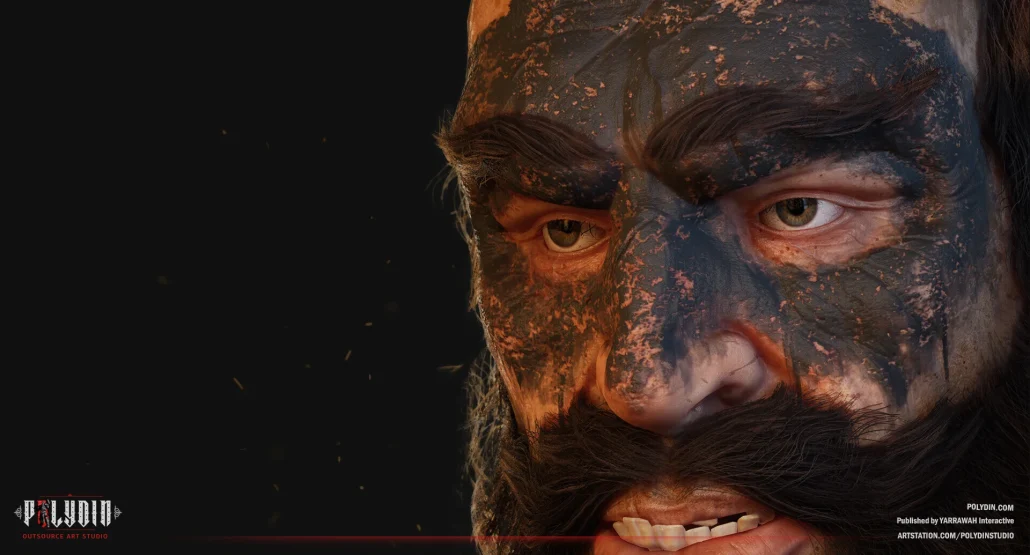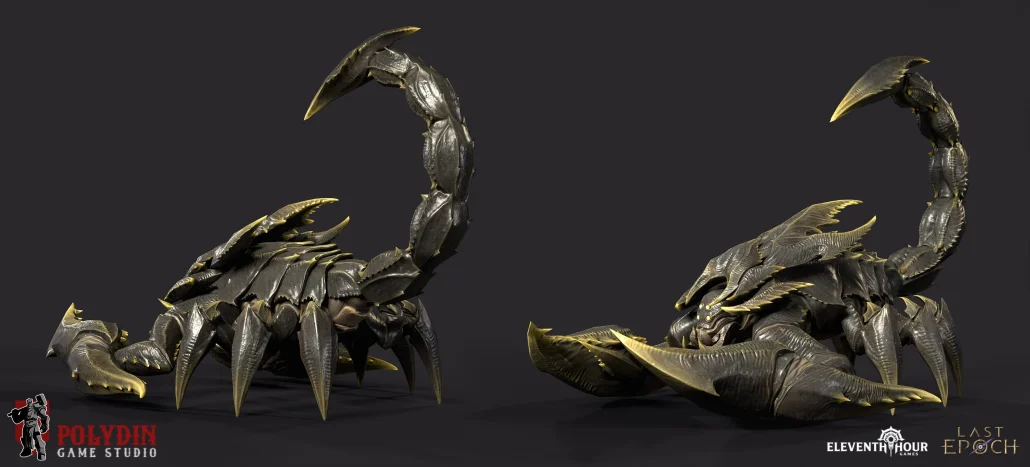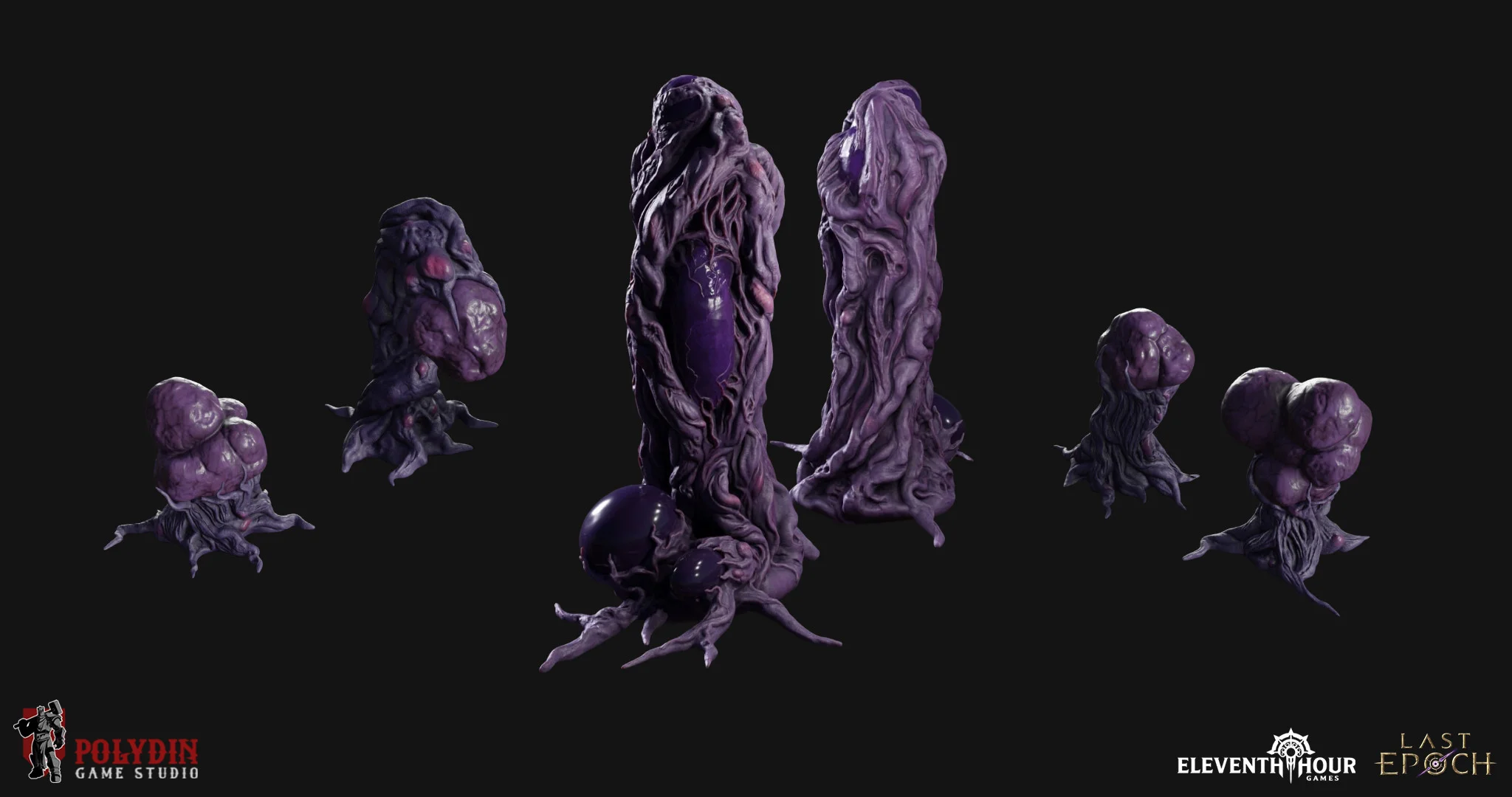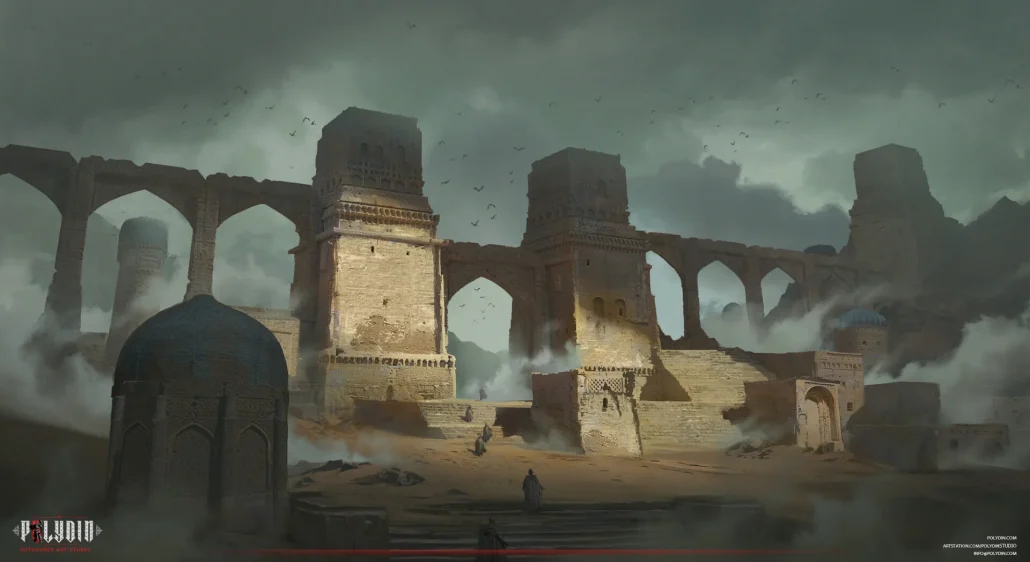In the realm of game development, the roles of Game Director vs Creative Director stand as pillars of leadership, guiding projects through conception to completion. While these titles may seem interchangeable, they each bring unique perspectives and responsibilities to the table. This exploration of Polydin Game Art Studio delves into the distinct roles of the Game Director vs Creative Director, uncovering their differences in roles, responsibilities, leadership styles, decision-making processes, and collaborative dynamics. Understanding these distinctions is vital for aspiring game developers and industry enthusiasts alike, as they navigate the complexities of game development leadership.
Who is a Game Director?
A Game Director is a pivotal figure in the development of video games, responsible for overseeing the entire creative and technical process of a game’s production. They are akin to the captain of a ship, guiding the project from conception to release and ensuring that the final product aligns with the vision set forth by the development team and stakeholders.
The Game Director is involved in every aspect of game development, including design, art direction, narrative, gameplay mechanics, and overall player experience. They work closely with various teams, such as designers, artists, programmers, and producers, to ensure that the game meets its objectives and maintains a cohesive vision throughout development. Ultimately, the Game Director is accountable for the success of the game, making critical decisions and adjustments to ensure its quality and appeal to the target audience.
Who is a Creative Director?
A Creative Director in the realm of video game development is a pivotal role responsible for shaping the artistic vision and style of a game. They lead the artistic direction, including aspects such as visual design, art assets, animation, and overall aesthetic appeal. Creative Directors work closely with artists, designers, and other creative professionals to ensure that the game’s visual elements align with the intended tone, theme, and narrative.
They oversee the implementation of artistic concepts and ensure consistency and quality across all aspects of the game’s visual presentation. Additionally, Creative Directors often collaborate with Game Directors and other key stakeholders to ensure that the artistic vision complements and enhances the overall gameplay experience.


What are the Major Differences Between a Game Director vs Creative Director?
In the intricate world of game development, the roles of Game Director and Creative Director stand as pillars, each bearing distinct responsibilities and contributing unique perspectives to the creative process. Understanding the differences between these two key positions is vital for ensuring clarity, efficiency, and synergy within game development teams. Let’s delve into the major disparities between Game Director vs Creative Director, exploring their roles, responsibilities, leadership styles, and decision-making processes.
Roles
The role of a Game Director primarily revolves around overseeing the entire game development stages of a video game, from conceptualization to completion. They are responsible for defining the game’s vision, mechanics, and overall direction, ensuring that the final product aligns with the intended experience. On the other hand, a Creative Director focuses specifically on the artistic aspects of game development. They lead the artistic team, shaping the game’s visual identity, style, and aesthetic elements to evoke the desired emotional response from players.
Responsibilities
Game Directors bear the ultimate responsibility for the success of the game, encompassing gameplay mechanics, narrative coherence, player engagement, and overall quality. They collaborate closely with various departments, including design, art, programming, and production, to ensure that the game meets its objectives and resonates with the target audience. In contrast, Creative Directors are chiefly accountable for the game’s artistic integrity, directing the creation of visual assets, environments, characters, animations, and effects. They provide artistic guidance, feedback, and direction to the art team, ensuring that the game’s visual elements harmonize with the narrative and gameplay.
Leadership Styles
Game Directors often exhibit assertive and decisive leadership styles, guiding the development team with a clear vision and strategic direction. They inspire and motivate team members, foster collaboration, and drive progress toward project milestones. Creative Directors, while also possessing strong leadership qualities, tend to emphasize creativity, innovation, and artistic expression. They encourage experimentation, nurture artistic talent, and cultivate an environment conducive to creative exploration and expression.
Decision-Making Process
In the realm of decision-making, Game Directors typically focus on overarching game design choices, strategic priorities, and project management decisions. They weigh factors such as player feedback, market trends, and technical constraints to make informed decisions that advance the game’s development. Conversely, Creative Directors concentrate on artistic decisions related to visual style, aesthetics, and thematic consistency. They evaluate concept art studios, review asset pipelines, and provide artistic direction to ensure that the game’s visual identity aligns with the intended creative vision.
Collaboration and Communication between the Game Director vs Creative Director
Effective collaboration and communication between the Game Director and Creative Director are paramount to the success of a game project. While they occupy distinct roles within the development hierarchy, their synergy is essential for ensuring that the game’s artistic vision aligns seamlessly with its overall design and gameplay mechanics.
Collaboration between the Game Director vs Creative Director involves constant dialogue and exchange of ideas to bridge the gap between gameplay objectives and artistic execution. They work closely together to translate abstract concepts and thematic elements into tangible visual assets and interactive experiences.
Clear and open communication channels are established to facilitate the sharing of feedback, concerns, and insights between the two directors and their respective teams. Regular meetings, brainstorming sessions, and creative reviews enable them to address challenges, iterate on concepts, and refine the game’s artistic direction iteratively.
Furthermore, collaboration extends beyond the Game Director vs Creative Director to encompass cross-functional teams, including designers, artists, programmers, and producers. Both directors play pivotal roles in fostering a collaborative culture within the visual development studio, where diverse perspectives are valued, and creative input is encouraged.
By fostering a culture of collaboration and open communication, the Game Director vs Creative Director can harness the collective expertise and creativity of their teams to realize the full potential of the game project. Together, they inspire, guide, and empower their teams to create memorable gaming experiences that resonate with players worldwide.


Impacts of Game Director and Creative Director on Game Development
The Game Director vs Creative Director wields significant influence over the trajectory and outcome of a game development project, each contributing distinct perspectives and expertise that shape the final product.
1. Vision and Direction: The Game Director sets the overarching vision and creative direction for the game, outlining key gameplay mechanics, narrative elements, and player experiences. Their vision serves as a guiding beacon for the entire development team, informing design decisions and driving the project forward. In contrast, the Creative Director focuses on the artistic vision, ensuring that visual aesthetics, style, and thematic consistency align with the game’s narrative and gameplay goals.
2. Cohesion and Consistency: Collaboration between the Game Director and Creative Director fosters cohesion and consistency across all aspects of the game. By aligning their visions and communicating effectively, they ensure that gameplay mechanics, visual aesthetics, audio design, and narrative elements complement each other seamlessly, creating a unified and immersive player experience.
3. Innovation and Creativity: Both directors play pivotal roles in fostering innovation and creativity within the development team. The Game Director encourages innovative gameplay ideas, mechanics, and features that push the boundaries of the medium, while the Creative Director explores innovative artistic techniques, styles, and storytelling approaches that elevate the game’s visual and narrative impact.
4. Quality and Excellence: The Game Director and Creative Director are instrumental in upholding standards of quality and excellence throughout the development process. They set high benchmarks for gameplay innovation, artistic craftsmanship, and technical polish, motivating their teams to strive for excellence in every aspect of the game’s creation.
5. Player Engagement and Satisfaction: Ultimately, the Game Director and Creative Director are responsible for delivering a compelling and memorable gaming experience that resonates with players. By leveraging their expertise, vision, and leadership, they aim to captivate audiences, evoke emotions, and leave a lasting impression that keeps players coming back for more.
In summary, the Game Director and Creative Director wield significant influence over game development, shaping its direction, cohesion, innovation, quality, and player engagement. Their collaborative efforts and leadership pave the way for the creation of immersive, memorable, and successful gaming experiences.
Challenges Faced by the Game Director vs Creative Director
While the roles of Game Director and Creative Director are vital to the success of a game development project, they also encounter various challenges that can impact their ability to fulfill their responsibilities effectively. These challenges stem from the complexities of game development, the dynamics of creative collaboration, and the pressures of delivering a successful product. Some of the key challenges faced by Game Directors and Creative Directors include:
1. Balancing Vision and Practicality: Game Directors and Creative Directors must strike a delicate balance between their creative vision for the game and the practical constraints of development, such as budget limitations, technical constraints, and time constraints. Navigating this balance requires making tough decisions and compromises to ensure that the final product meets both artistic aspirations and project requirements.
2. Managing Creative Differences: In a collaborative creative environment, disagreements and conflicts are inevitable. Game Directors and Creative Directors must navigate these challenges diplomatically, fostering open communication, constructive feedback, and compromise to resolve creative differences and maintain team cohesion.
3. Adapting to Changing Requirements: Game development is a dynamic and iterative process, often characterized by evolving project requirements, shifting priorities, and unforeseen obstacles. Game Directors and Creative Directors must be adaptable and agile, responding effectively to changes in scope, direction, or resource allocation while staying focused on the project’s overarching goals.
4. Maintaining Team Morale and Motivation: Leading a game development team requires not only technical expertise and creative vision but also strong leadership skills. Game Directors and Creative Directors must inspire and motivate their teams, cultivating a positive work environment, fostering collaboration, and recognizing and rewarding individual contributions.
5. Managing Stakeholder Expectations: Game development projects often involve multiple stakeholders, including publishers, investors, marketing teams, and external partners. Game Directors and Creative Directors must effectively manage stakeholder expectations, balancing creative autonomy with the need to address feedback, concerns, and strategic objectives to ensure alignment and buy-in throughout the development process.
6. Handling Pressure and Stress: Game development can be a high-pressure environment, with tight deadlines, demanding schedules, and intense scrutiny from both internal and external sources. Game Directors and Creative Directors must manage stress effectively, maintaining focus, resilience, and a positive mindset to navigate challenges and setbacks without compromising the quality of their work or the well-being of their team.
In summary, Game Directors and Creative Directors face a myriad of challenges in their roles, from balancing creative vision with practical constraints to managing team dynamics, stakeholder expectations, and the pressures of game development. Successfully navigating these challenges requires a combination of leadership skills, creative vision, adaptability, and resilience, ultimately contributing to the successful realization of their artistic and strategic goals.


Future Trends
The landscape of game development is constantly evolving, driven by advancements in technology, shifts in consumer preferences, and emerging trends in the gaming industry. Game Directors and Creative Directors must stay abreast of these developments to anticipate future trends and position their projects for success. Some key future trends that Game Directors and Creative Directors should consider include:
- Immersive Technologies: With the rise of virtual reality (VR), augmented reality (AR), and mixed reality (MR), the gaming industry is witnessing a shift towards more immersive experiences. Game Directors and Creative Directors may need to explore new techniques of storytelling in games, gameplay mechanics, and design principles to leverage these technologies effectively and create compelling immersive experiences.
- Player Personalization: As players seek more personalized gaming experiences, Game Directors and Creative Directors may need to integrate features such as adaptive storytelling, dynamic difficulty adjustment, and personalized content recommendations to cater to individual player preferences and enhance player engagement.
- Cross-Platform Integration: With the increasing prevalence of cross-platform gaming, Game Directors and Creative Directors may need to develop strategies for seamless integration across multiple platforms, including consoles, PC, mobile devices, and emerging platforms like cloud gaming services.
- Live Services and Games as a Service (GaaS): The shift towards live services and games as a service (GaaS) models presents new opportunities and challenges for Game Directors and Creative Directors. They may need to adopt agile development methodologies, implement continuous updates and content expansions, and foster ongoing player engagement to sustain long-term success in a competitive marketplace.
- User-Generated Content: With the growing popularity of user-generated content platforms and community-driven content creation, Game Directors and Creative Directors may need to embrace player creativity and empower players to contribute to the game’s ecosystem through modding tools, level editors, and other user-generated content features.
- Ethical and Social Responsibility: As games continue to grapple with issues related to diversity, inclusion, representation, and ethical considerations, Game Directors and Creative Directors must prioritize responsible design practices, cultural sensitivity, and social impact to create games that resonate with diverse audiences and contribute positively to society.
By staying informed about these future trends and proactively adapting their strategies and approaches, Game Directors and Creative Directors can position their projects for success in a rapidly evolving gaming landscape, driving innovation, fostering creativity, and delivering memorable experiences for players around the world.
Conclusion
In conclusion, the roles of Game Director vs Creative Director are pivotal in shaping the direction, vision, and execution of game development projects. While both roles share similarities in their pursuit of delivering engaging and immersive gaming experiences, they also exhibit distinct differences in their responsibilities, leadership styles, and decision-making processes. By understanding these differences, collaborating effectively, and addressing the challenges and opportunities inherent in game development, Game Directors and Creative Directors can drive innovation, foster creativity, and ultimately, deliver exceptional gaming experiences that captivate players and leave a lasting impact on the industry.


